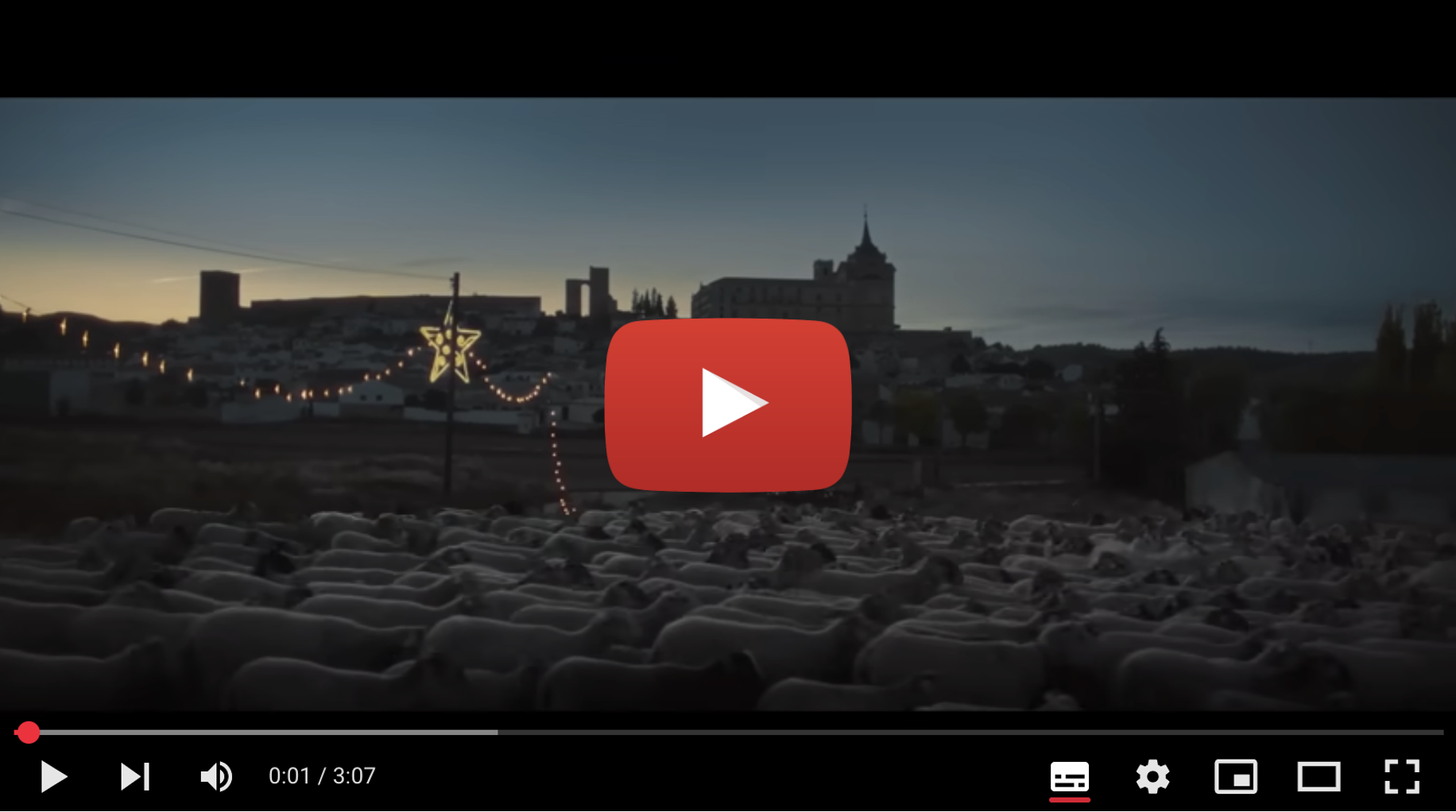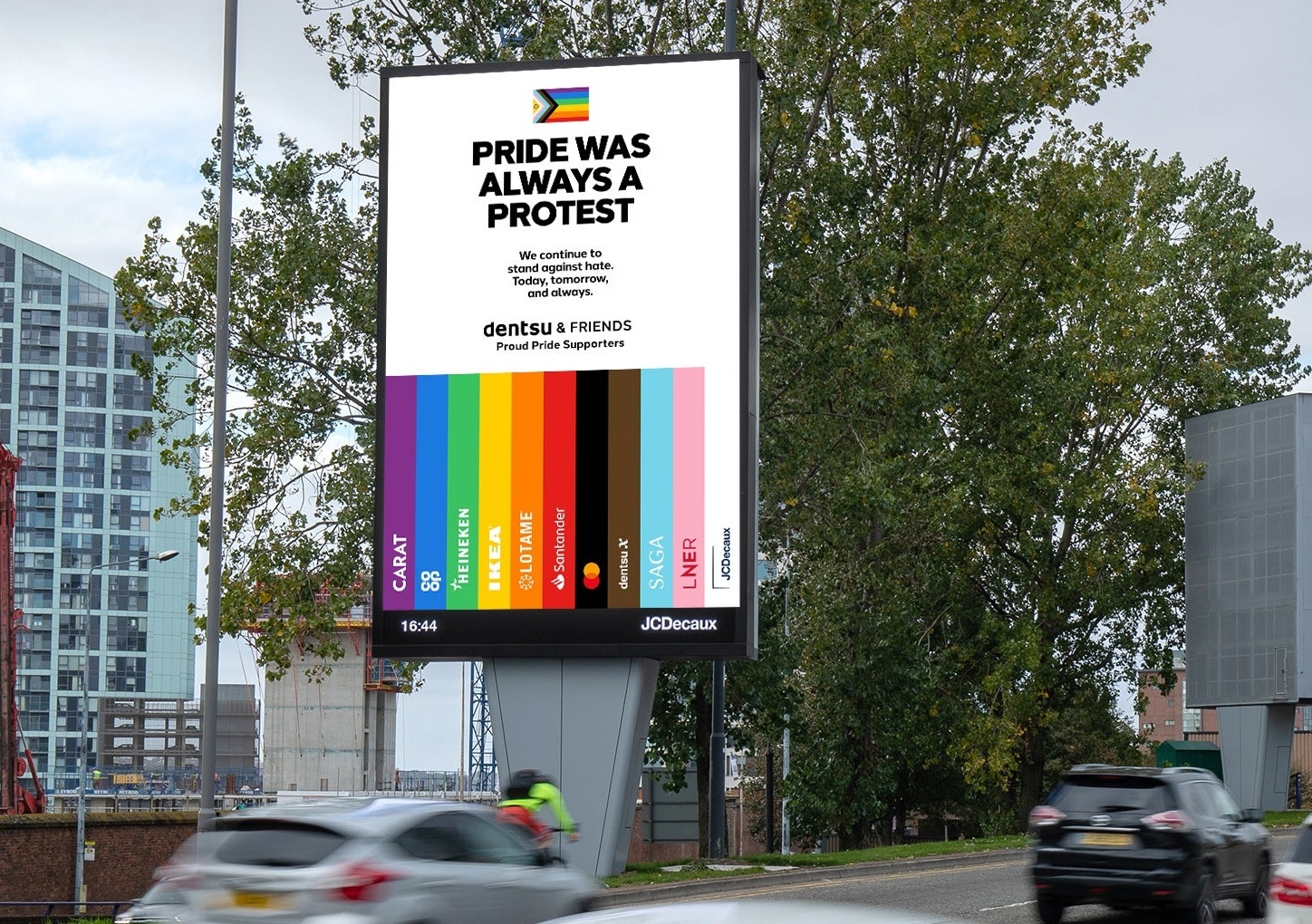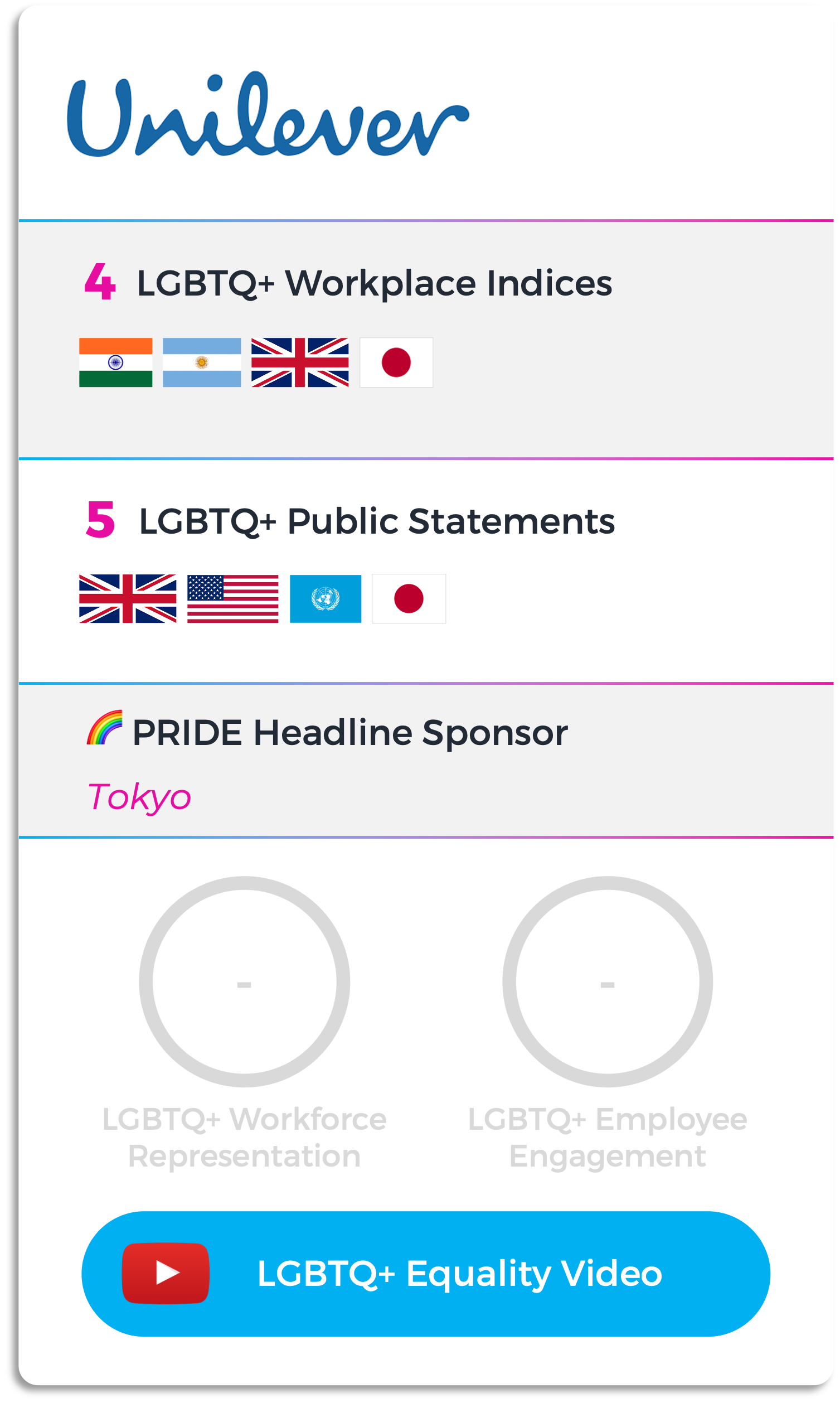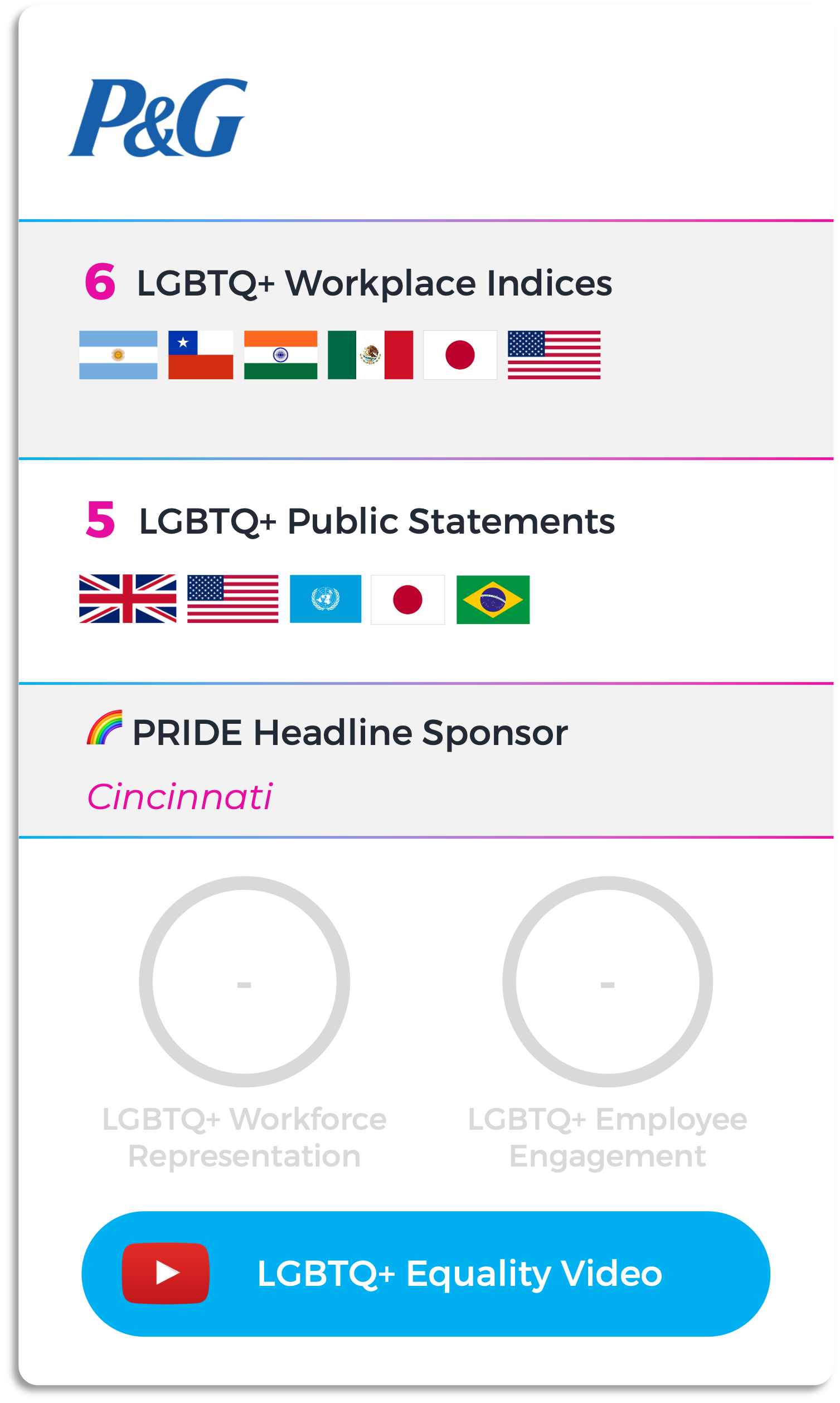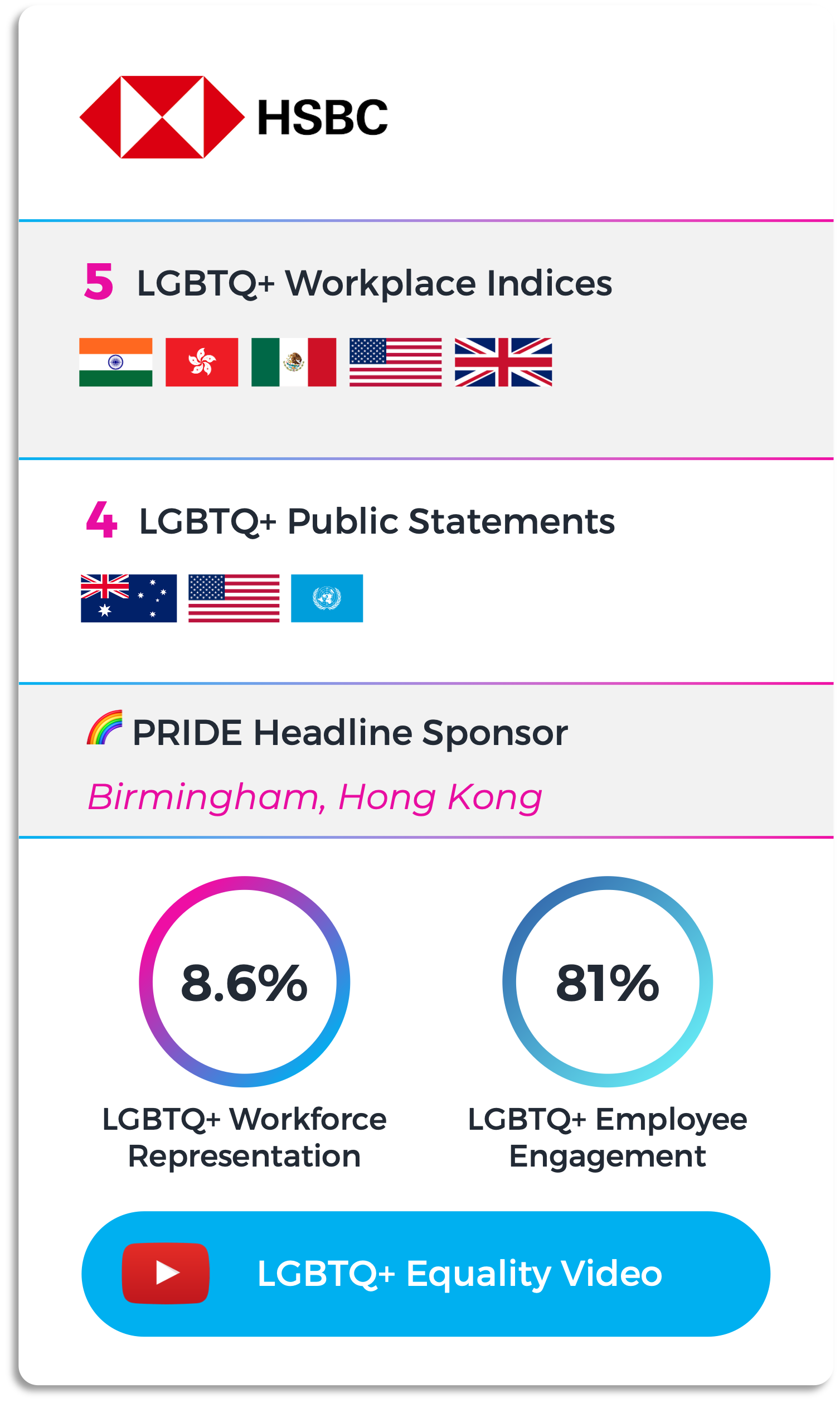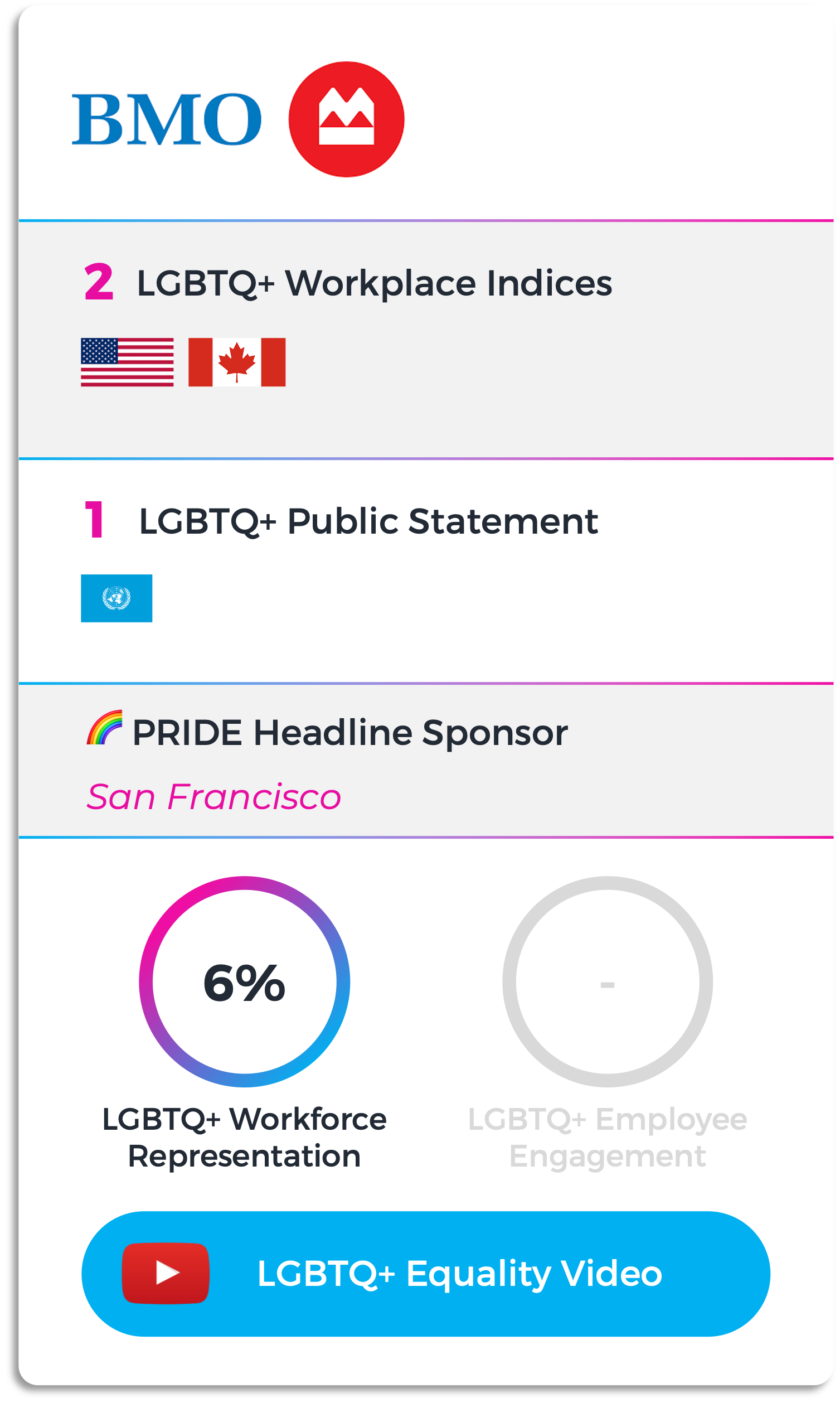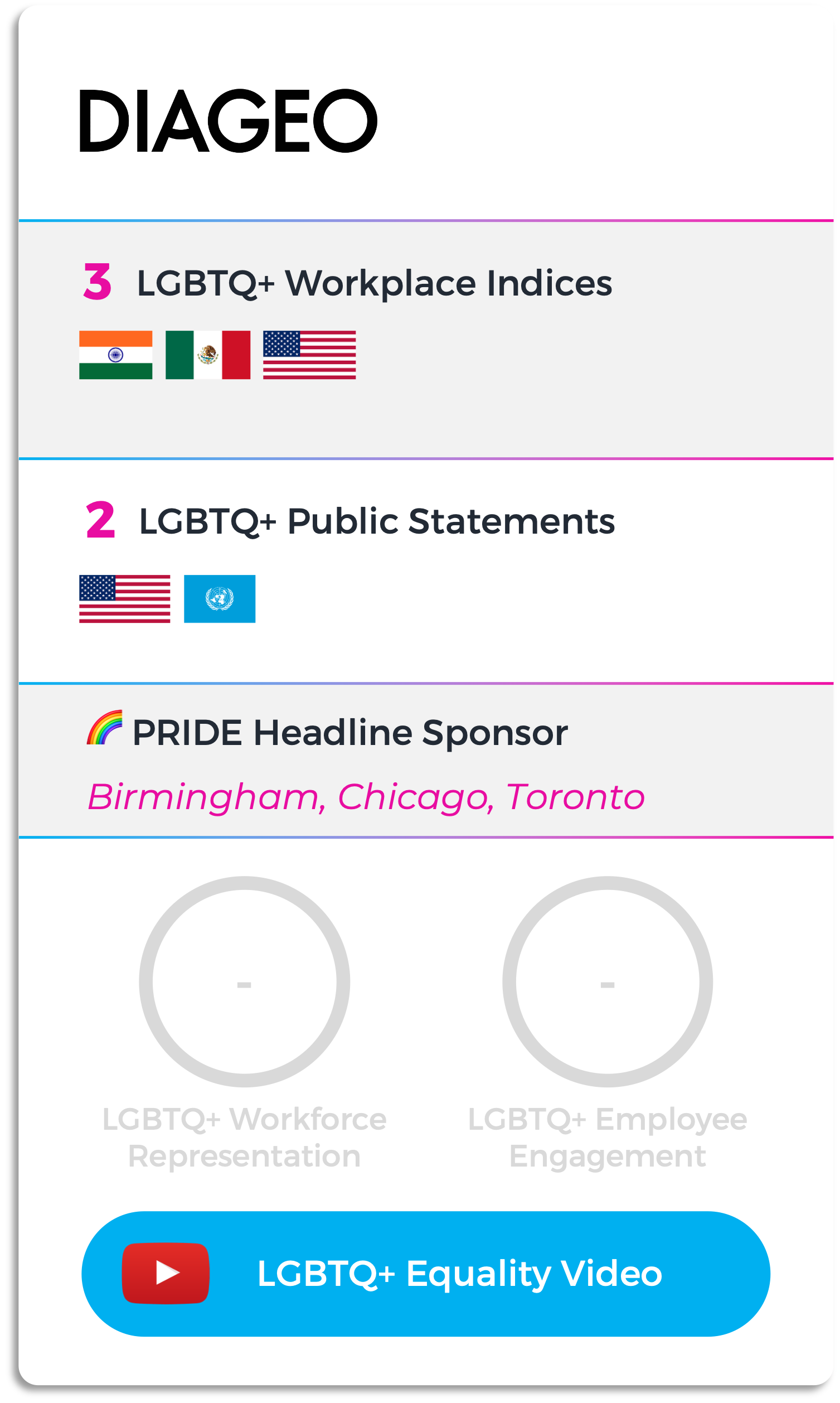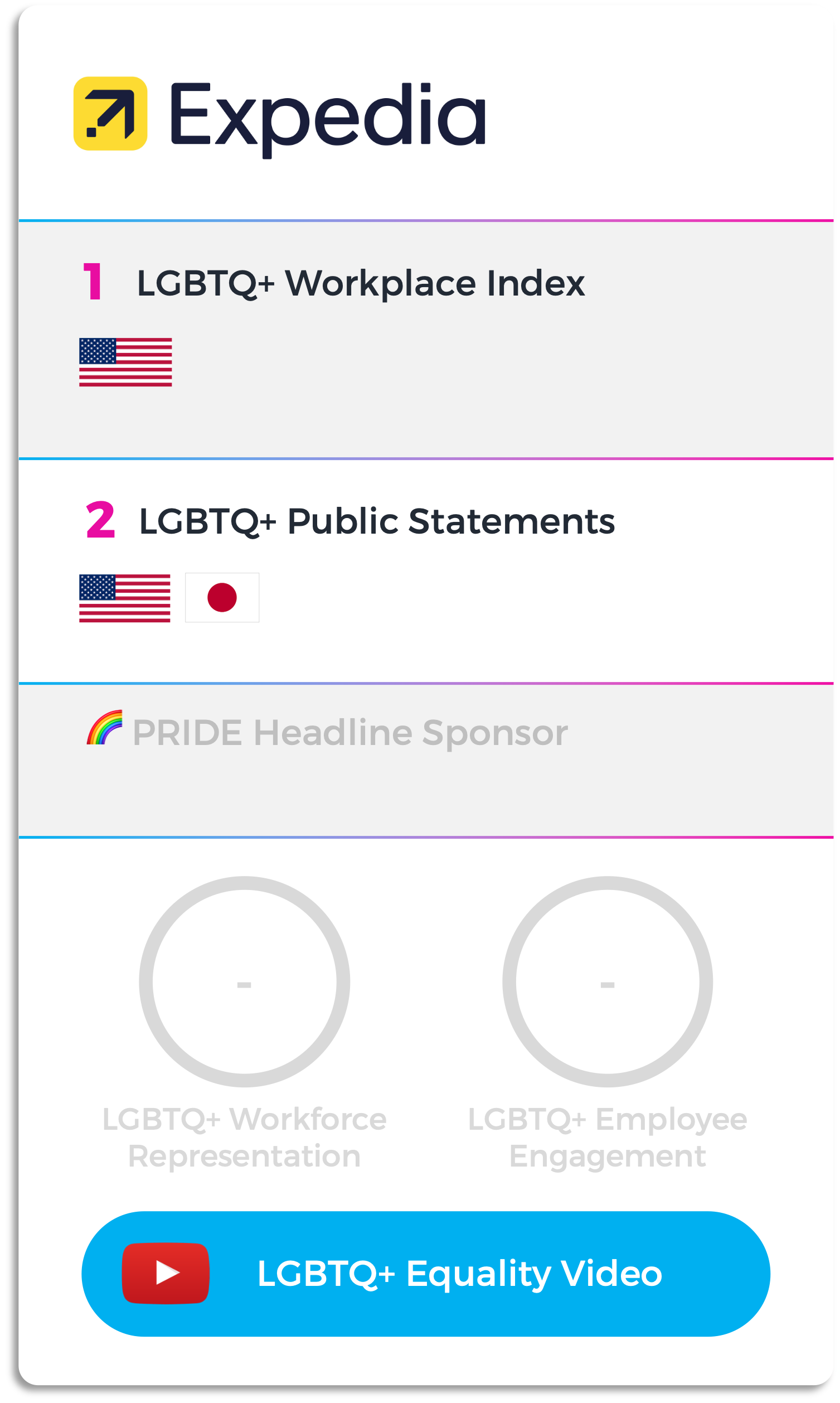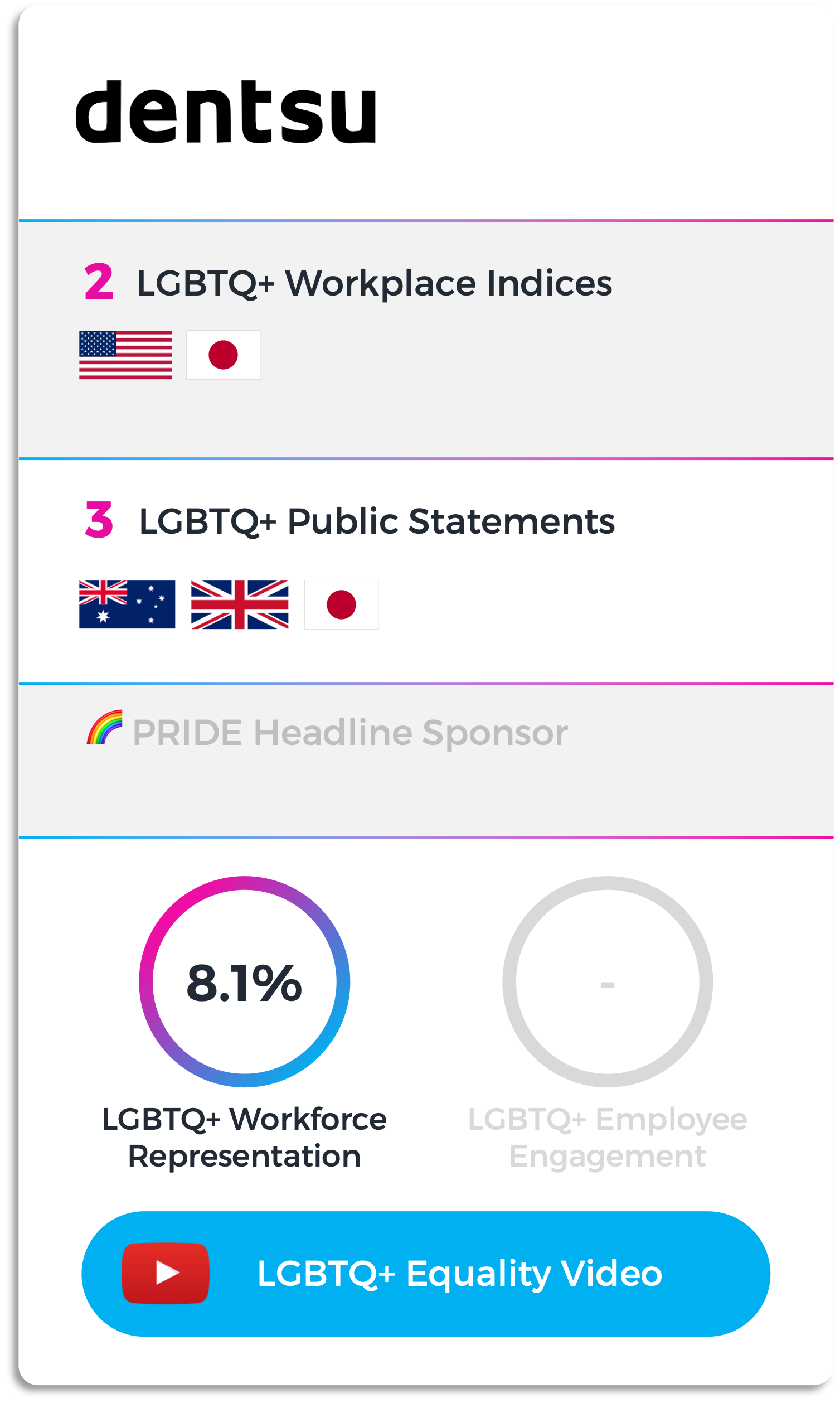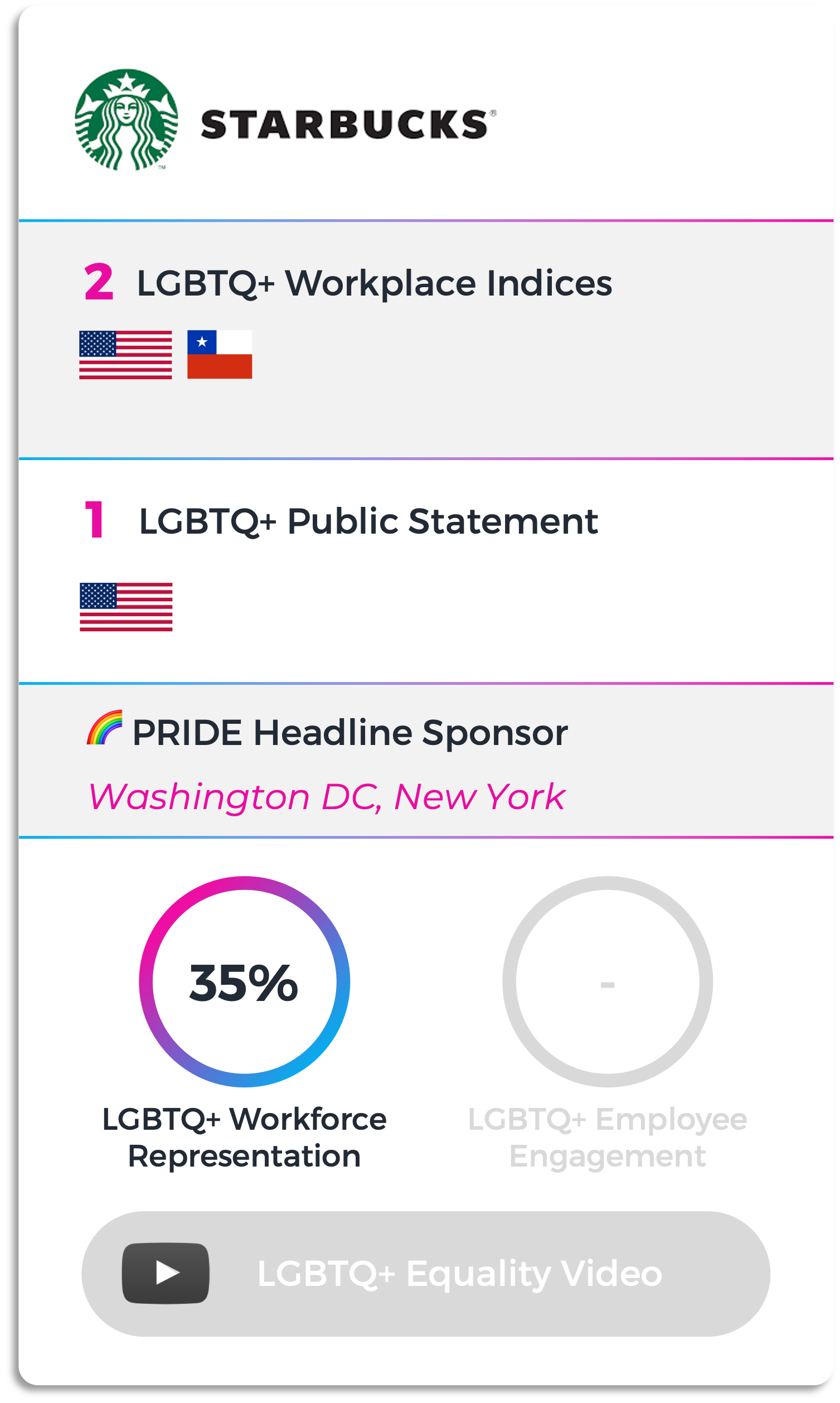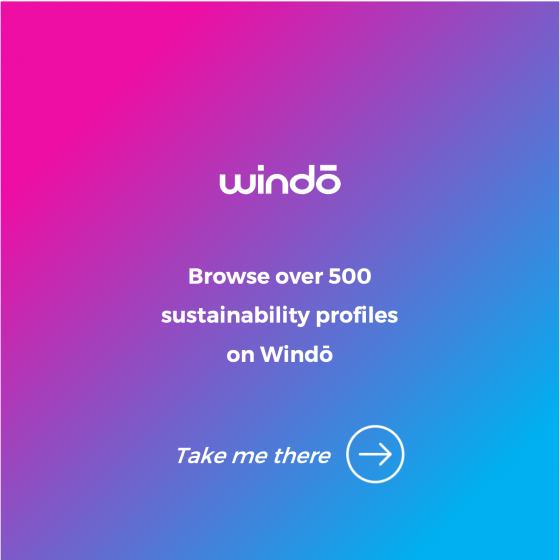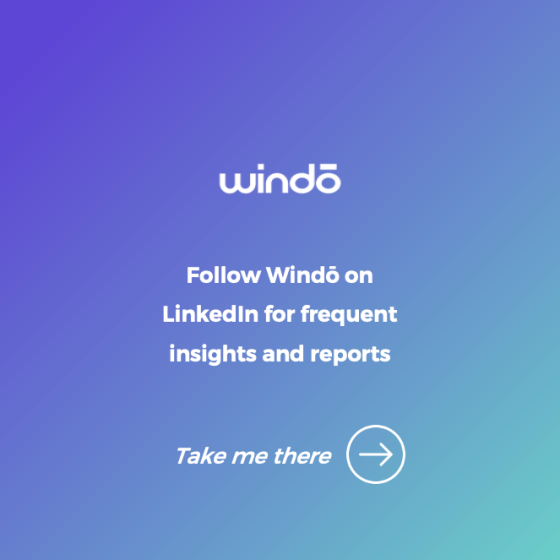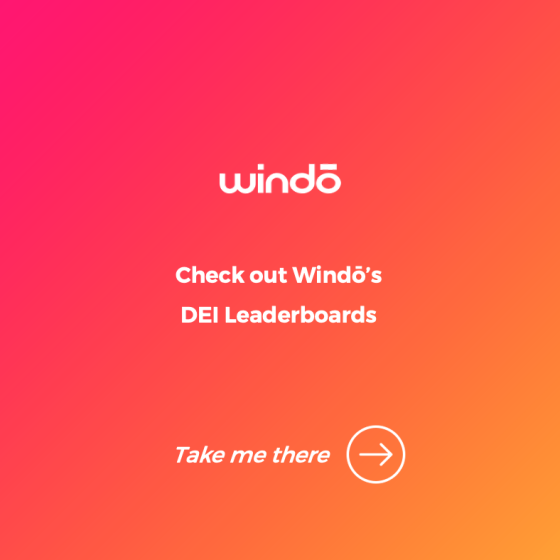A global look at 8 campaigns—and the internal commitments that signal real inclusion.
Ken Janssens (Windō) & Max Templeton (LGBT+@Work at IE Business School, Madrid)

Executive Summary
This report explores how leading brands have approached LGBTQ+ inclusion through both marketing and internal practices. It offers a global snapshot of authenticity in action – where creative expression meets lived values.
What You’ll Find Inside:
- Introduction: The urgency and expectations surrounding LGBTQ+ representation in brand communication and company culture.
- The Campaigns: Pride in Action: Eight standout campaigns from across sectors and regions, analysed for their storytelling, cultural relevance, and emotional impact.
- Do They Walk the Talk?: A look behind the curtain – comparing each brand’s marketing with their actual LGBTQ+ workplace commitments.
- Cross-Industry Insights: Transparency trends and DEI performance across Banking, FMCG, Telecom, Travel, Food, and Media.
- Recommendations: Eight actionable insights on how brands can build genuine trust with LGBTQ+ communities, drawn from the campaigns that got it right.
- Conclusion: Why credibility must be earned through consistency, action, and internal alignment – not seasonal symbolism.

“This report should be read by every advertiser. The statistics remain disappointing on many levels, not least the percentage of consumers who place importance on the brands they buy promoting diversity and inclusion in society as a whole. Whilst this is significant, until this is 100%, our job is not done. It demonstrates the role advertisers can and should play in driving societal inclusivity. As Bernbach noted: ‘All of us who professionally use the mass media are the shapers of society. We can vulgarize that society. We can brutalize it. Or we can help lift it onto a higher level.’ The examples of brands getting it right in ‘difficult’ categories to such acclaim should be an inspiration to us all. This report is stark, clear and an instructive call to action.”
Glen Lomas, Global President & Chief Operating Officer, DDB
This report is a call to move beyond rainbow logos toward a standard of marketing that’s informed, intentional, and inclusive – year-round.
Introduction
Inclusion Can’t Just Be a Campaign
According to LGBT Capital, the global aggregated spending power of the LGBTQ+ population – the LGBT-GDP – is estimated at US$4.7 trillion annually, representing over 388 million individuals across 15 countries.
And yet, LGBTQ+ people remain underrepresented in advertising:
- In a 2023 review of over 400 ads by GLAAD, only 1.42% of total screen time featured LGBTQ+ people or stories. Just 3% of all ads were considered inclusive.
- This is disproportionately low given that 7.2% of U.S. adults identify as LGBTQ+, rising to 11% of Millennials and up to 1 in 5 Gen Z, according to Gallup.
Meanwhile, consumer expectations are rising.
According to Kantar’s Diva Report (April 2025), consumers increasingly expect brands to stand for inclusion – not just in ads, but in how they operate:
“Is it important to me that brands I buy from actively promote diversity and inclusion in their own business or society as a whole?”
India
agree of strongly agree
USA
agree of strongly agree
South Africa
agree of strongly agree
UK
agree of strongly agree

“Authentic LGBTQ+ representation in advertising and marketing wields immense power. It can enlighten and inspire, shape the cultural landscape, smash stereotypes, and help remove prejudice. When a campaign truly reflects who we are as queer people, we begin to build a connection with that brand that most marketers could only dream of. The opportunity is here and now; to invest in authentic, inclusive marketing with real depth that delivers tangible business results and creates positive social change. Devouring this report should be one of your first steps to realise that opportunity.”
Chris Dunne, CEO, Outvertising; Head of Marketing, Thinkbox
Authentic LGBTQ+ marketing = External voice + Internal commitment
This report examines that equation in action. We analysed eight standout LGBTQ+ campaigns, then looked behind the curtain at each brand’s internal track record. What emerges is a clearer picture of what it means to walk the talk.
The Campaigns
Pride in Action
These eight campaigns, which reached millions across North America, Europe and Asia, exemplify creativity, empathy, and intention – whether spotlighting transgender inclusion, celebrating chosen families, or normalising same-sex relationships. What makes them land isn’t just production quality – it’s insight and relevance.
Each campaign was selected for its positive reception and powerful message.
Vaseline (Thailand, Unilever) 2024
Primary Creative Agency: Ogilvy, Singapore.
Why It Landed: It was empathetic and insight-driven, integrated into brand purpose, and provided a concrete solution to a real problem.
When Vaseline discovered that 98% of trans women wanted skincare that addressed their transition-related needs, it saw an opportunity to genuinely support a vulnerable community and fill a gap in the market. Enter: the Vaseline Transition Body Lotion.
After consulting and co-creating for two years with Thailand’s trans community, Vaseline released the world’s first clinically proven skincare product designed specifically for trans women.
The product was driven by Vaseline’s core brand purpose – ‘Healthy Skin For All’. It solved a real problem felt by the target market, driving both social impact and boosting brand equity/innovation in the skincare category.
The campaign reinforced Vaseline’s ‘For All’ promise in a way it hoped would build trust, brand love, and incremental sales – and they succeeded.
The campaign gathered 158m impressions in Thailand alone, with purchase intent skyrocketing 725%. According to Vaseline, the campaign even reached the coveted 100% positive sentiment every marketer dreams of. Embedded in a broader DEI strategy and community outreach effort, the campaign won the Cannes Lions 2024 Glass Grand Prix, along with several pencils at D&AD and One Show. It proved that by rooting a concept in real insight and co-creation, you can achieve both social impact and commercial success.
What The Windō Data Says
Does Unilever Walk the Talk when it comes to LGBTQ+ Equality & Inclusion efforts?
HSBC (Hong Kong) 2022
Primary Creative Agency: Wunderman Thompson.
Why It Landed: It understood the context it exists in, normalised LGBTQ+ representation, humanised its services, and used storytelling to make product integration feel meaningful.
Telling the story of a lesbian couple at an impasse in their relationship, HSBC’s ‘We Café’ is a touching narrative that shows one woman secretly working to start a café business with the help of HSBC loans as a sign of commitment to their shared future.
But here’s the catch: it could’ve been anyone. The ad presents the same-sex relationship matter-of-factly, focusing on universal themes of love, trust, and ambition rather than making it the sole focus. The story could have been centred on a heterosexual couple, and it would’ve stayed exactly the same.
The context the ad was released in is crucial – HSBC had to consider Hong Kong’s social climate. Yes, it showed boldness by taking a calculated creative risk in a challenging advertising market: it was the first bank in HK to prominently feature an LGBTQ+ couple in their marketing. But by framing the idea in a culturally resonant way – positioning the story around common values like family and commitment rather than an overt Pride theme – it was able to drive broader social acceptance.
Not only did HSBC manage to boost brand affinity, consideration, and equity, but it reached its intended audience – 92 million impressions led to 79% of consumers seeing the bank as younger and more modern, and 70% seeing it as advocating diversity and inclusion.
HSBC did inclusion the right way by embedding it naturally into a relatable story – signalling it understood modern HK families and connecting with a new generation of customers.
What The Windō Data Says
Does HSBC Walk the Talk when it comes to LGBTQ+ Equality & Inclusion efforts?
The traditionally macho, masculine whisky sector is known for ‘the kind of ads that put hair on your chest’. So how did Diageo’s J&B Whisky create an ad that made the internet cry?
‘She’ is a three-minute Spanish Christmas short film, telling the story of a grandfather in a rural village who secretly teaches himself to apply makeup so he can help his trans granddaughter express herself and rejoin Christmas dinner as her true self, to tearful embraces and a toast with J&B Whisky.
The campaign ties into J&B’s brand purpose of “celebrating together” and not leaving anyone out of life’s festivities. The film explicitly shines a light on “homosexoledad navideña” – the loneliness many LGBTQ+ people feel at Christmas if they must hide their true selves.
It was a virtually unprecedented ad for the whisky sector – to say it was highly risky would be an understatement. And yet, it paid off.
Within 72 hours, it had reached 5 million organic views with barely any media spend. In the weeks after launch, media coverage of the film gave J&B an estimated PR reach of 345 million people. It earned a 46% recall rate (double the average for Christmas ads) and was received to immensely positive feedback in all corners of the globe – including at Cannes.
The ad became a unique case study on how storytelling can create lasting impact. The subtle branding ensured the focus remained on the emotional narrative, showing that sometimes, less really is more.
What The Windō Data Says
Does Diageo Walk the Talk when it comes to LGBTQ+ Equality & Inclusion efforts?
BMO (Canada) 2024
Primary Creative Agency: FCB Canada.
Why It Landed: The inherent connection between campaign concept and BMO’s core business made the execution feel genuine; resonating both logically (it made sense) and emotionally (it felt right) to answer the “so what” question many Pride campaigns face.
How many brands can say their Pride campaign literally saved lives? Almost none – but BMO makes the list.
During Pride, the rainbow symbol is all around us. BMO decided to capitalise on that – turning the motif into a vehicle for real action. The ‘Rainbow Deposits’ campaign invited anyone with a phone to “spot, snap and deposit” photos of rainbows – whether in nature, Pride flags, or even other brands’ rainbow logos – via a custom web app.
Each one triggered a $1 donation from BMO to the LGBTQ+ charity Rainbow Railroad, directly helping vulnerable LGBTQ+ people flee persecution and begin new lives in safer countries.
Notably, BMO leveraged its unique capability as a bank (deposits) to drive what it believes in (inclusion). It found a creative analogue that made the support feel native to its brand, giving the campaign a strategic coherence that stood out.
The campaign was a direct response to rainbow-washing – the practice of using LGBTQ+ symbols for marketing without real support behind them. It aimed to flip the script by demonstrating material allyship: every rainbow on display should have tangible value, not just virtue signal. Essentially – they put their money where their mouth is.
Over the first two years of the campaign, 100,000+ rainbow photos were deposited from 600+ cities, with the brand winning an Effie for Marketing Effectiveness and reporting significant increases in brand affinity.
The campaign helped normalise the idea that brands should link Pride visibility with accountability.
What The Windō Data Says
Does BMO Walk the Talk when it comes to LGBTQ+ Equality & Inclusion efforts?
Pride month usually feels like a constant barrage of rainbow ads all competing with each other, most failing to acknowledge Pride’s activist origins and how that struggle continues today. Dentsu challenged that.
By bringing together multiple brands under one banner, their 2023 edition of its ‘dentsu & Friends’ campaign reached an estimated 10 million people across the UK with a message of unity and solidarity. The campaign has run for four years in several European countries, demonstrating how long-term, consistent commitment help drive a campaign’s authenticity.
Rather than each company running its own Pride ad, the DOOH campaign presented a single, collective message on behalf of all partners – collectively saying that Pride is an ongoing struggle and that they stand on the side of inclusion.
The notable example of purpose-driven marketing explicitly referenced Pride’s protest roots and reminded the public why Pride is necessary, resonating as authentic and courageous in a sea of rainbow logos.
Each brand involved was also invited to donate to an LGBTQ+ charity, with Dentsu match-funding the highest donation. Bold visuals, a unifying motif, and a clear CTA made this more than symbolic – linking brand support to real-world impact.
What The Windō Data Says
Does Dentsu Walk the Talk when it comes to LGBTQ+ Equality & Inclusion efforts?
Orbitz (Expedia) 2021
Primary Creative Agency: Laundry Service.
Why It Landed: Orbitz had earned the credibility to tell these stories. This, combined with bringing in LGBTQ+ creators at every stage and including concrete product changes, meant it was able to be simultaneously socially impactful and brand-building.
Travel is difficult for LGBTQ+ travelers – it’s still illegal to be gay in 65+ countries, and Orbitz saw an opportunity to differentiate itself by championing an underserved segment, addressing real pain points, and celebrating queer travelers.
In 2001, Orbitz became one of the first mainstream travel companies to embrace LGBTQ+ consumers in its advertising, part of a broader strategy that included creating a dedicated LGBTQ+ microsite in order to engage and support vulnerable communities.
And in 2021, it celebrated the 20th anniversary of its initial LGBTQ+ campaign with the ‘Travel As You Are’ initiative.
In the campaign, they made a point to involve LGBTQ+ individuals both in front of and behind the camera. The ad is directed by acclaimed queer photographer/director Cass Bird, features real-life LGBTQ+ couples, and is accompanied by the feminist liberation song “You Don’t Own Me”, reimagined by gay artist serpentwithfeet.
Conceived as a long-term brand platform rather than a fleeting activation, it reasserted Orbitz’s leadership in inclusive travel, connecting to a broader platform of inclusion that included LGBTQ+ friendly hotel filters, LGBTQ+ safety guides, and more.
Instead of just asking the community to ‘travel as they are’, it took action to help them actually do it. This, combined with a 20-year foundation of genuine allyship, gave the message credibility and weight far beyond a typical Pride campaign.
With a 572% increase in site visits and a 5-star rating from System1 for effectiveness, it proved to be a phenomenal case study in authentic, inclusive marketing.
What The Windō Data Says
Does Expedia Walk the Talk when it comes to LGBTQ+ Equality & Inclusion efforts?
Starbucks (India) 2023
Primary Creative Agency: Edelman India.
Why It Landed: It found where its brand values intersected with the issue, had internal buy-in that drove an unwavering response to backlash, and localised a global idea in a way that made sense for India.
Starbucks’ brand positioning is clear: it isn’t just selling coffee, but providing a “third place” of community and acceptance where every individual can feel recognised. In ‘It Starts With Your Name – Arpit’, it wanted to emphasise exactly this – that it was people first. And it worked.
Working with talent from the LGBTQ+ community, Starbucks built a narrative grounded in everyday realism – showing a scenario familiar to all too many trans people.
By setting the reunion between a transgender woman and her parents in a Starbucks café, the ad used the brand’s familiar ritual of names on coffee cups as a powerful storytelling device: the act of calling out a customer’s name becomes a symbol of identity and acceptance.
The campaign took a gamble – few brands in India had dared such a depiction, and Starbucks exposed itself to much greater scrutiny than any previous representations had in the country. Indeed, it was met with a very polarising public reception.
Nevertheless it worked: the ad went viral, garnering over 12 million views in just two months. Trending under #BoycottStarbucks, Starbucks was accused of imposing Western culture in India. But it didn’t withdraw the ad. In fact, it released a statement doubling down. It was this firm stance that, instead of translating to mass customer exodus, actually elevated the brand’s profile.
Starbucks’ seamless integration of brand ritual and social message worked perfectly. It linked its brand practice (using customers’ names) with the idea that respecting someone’s name is a powerful first step toward inclusion. And it pushed the envelope in the perfect way.
What The Windō Data Says
Does Starbucks Walk the Talk when it comes to LGBTQ+ Equality & Inclusion efforts?
Pantene (Procter & Gamble) 2023
Primary Creative Agency: Valtech Radon.
Why It Landed: Born from the actual experience of LGBTQ+ individuals, the campaign had deep integration with the brand’s identity, core business, and long-term platform.
Hair is the #1 way people choose to express themselves, and 60% of LGBTQ+ people change their hair to express their true identity when coming out. This insight inspired Pantene to release Lengths of Strength – an empowering creative celebrating the transformative power of LGBTQ+ people.
Released on International Coming Out Day in 2023, the campaign was built under one core theme: empowerment through self-expression. It communicates that hair has no gender and that Pantene supports “great hair days for everyone”, tying directly to Pantene’s product promise while also standing as a broader statement about identity.
By aligning with stories from real-life members of the LGBTQ+ community, Pantene sought to humanise the brand, build emotional connection, and earn goodwill that could translate long-term preference.
Part of a multi-year initiative, the campaign showed continuity and commitment while tying back to what the brand stands for. It didn’t feel like Pantene was opportunistically jumping on a social cause, but instead releasing a logical extension of its brand promise to give everyone confidence in their hair.
Pantene successfully positioned itself as a brave brand in markets where LGBTQ+ visibility is still suboptimal- such as Eastern and Southern Europe. It managed to deepen its connection with consumers (especially LGBTQ+ youth) and earn cultural capital as an authentic ally – something many brands struggle to do.
What The Windō Data Says
Does Procter & Gamble Walk the Talk when it comes to LGBTQ+ Equality & Inclusion efforts?
Do These Organisations Walk the Talk?
We then looked behind the curtain: does each brand’s LGBTQ+ inclusion strategy reflect their external marketing?
We examined:
- Recognition in LGBTQ+ inclusive workplace indices across 13 countries
- Public advocacy track record in support of LGBTQ+ rights
- Headline sponsors for one or more Pride Marches
- LGBTQ+ workforce data and LGTBQ+ employee engagement data
- Workplace videos focused on LGBTQ+ experiences
Evaluating Alignment:
- HSBC and BMO, the two banks in our review, demonstrate the strongest alignment between internal DEI practices and their external voice. Both are recognised in LGBTQ+ workplace equality indices, sponsor Pride events, and disclose meaningful LGBTQ+ workforce data—illustrating that inclusive storytelling is backed by inclusive cultures.
- Dentsu also shows strong signs of alignment, combining visible internal storytelling, with above-average LGBTQ+ workforce data disclosure and external recognition as an LGBTQ+ inclusive employer.
- Starbucks shows strong LGBTQ+ inclusion in the U.S., with a high rate of self-identified LGBTQ+ employees and top workplace scores. However, it would benefit from greater global recognition as an inclusive employer and more visible advocacy outside the U.S.—especially given its LGBTQ+ campaigns in markets like India and the UK.
- Unilever and Diageo stand out for their public support for LGBTQ+ rights and sponsorship of Pride events. However, they would benefit from increased transparency around internal LGBTQ+ workforce data and employee engagement to further cement authenticity.
- P&G is globally recognised as an LGBTQ+ inclusive employer and has consistently advocated for LGBTQ+ rights. Like several peers, it now has an opportunity to strengthen that leadership by increasing transparency around its LGBTQ+ workforce and employee experience.
- Expedia, with 16,500 employees across nearly 50 countries, has taken meaningful steps by speaking out in support of LGBTQ+ rights in the US and Japan. However, it would benefit from broader recognition as an LGBTQ+ inclusive employer globally—particularly outside North America—and from disclosing LGBTQ+ workforce data to strengthen its position as an authentically inclusive brand.
Overall, the strongest brands are those that integrate DEI into both narrative and operations. Increased transparency—especially around workforce data and internal engagement—can help brands deepen trust and move from performance to proof.
Room for Growth: How Industries Compare on LGBTQ+ Inclusion
Windō’s cross-industry data offers context on transparency and inclusion practices.






Summary:
- Banking and Media & Comms are the strongest on transparency
- Telecoms performs moderately as an industry
- FMCG and Travel & Hospitality do well on advocating for LGBTQ+ rights and getting recognition as LGBTQ+ Inclusive employers but lack of internal LGBTQ+ DEI transparency
Recommendations: From Campaigns to Credibility
These eight campaigns show what works—and why. Brands looking to build LGBTQ+ trust should consider the following.
#1: Make It Real, Make It Fit
Authentic LGBTQ+ campaigns work best when they align with a brand’s core purpose, values, and capabilities.
The campaign has to feel like a natural extension of what the brand already stood for – that prior actions or understandings of the brand held by consumers gave it the credibility or permission to tell this story.
Evidently, authenticity comes easier when the cause aligns naturally with who your brand has always been. Look at Vaseline – a campaign providing specialised skincare to trans people made sense coming from a brand with a longstanding belief in ‘Healthy Skin For All’.
And with BMO, ‘Rainbow Deposits’ could have only come from a bank – creating an inherent tie between campaign concept and core business that made the execution feel genuine.
#2: Nothing About Us Without Us
You cannot successfully practice LGBTQ+ inclusive marketing without engaging the community and centering real LGBTQ+ voices, stories, and histories; inside and out.
Inclusion in ads rings hollow if your external representation isn’t supported by internal representation – all the way from creative to company culture.
This can look like a lot of things. At Vaseline, they co-created their campaign side-by-side with the trans community for years. Rather than imposing a feel-good message from the top down, the brand started by listening to its consumers’ unmet needs.
And at Pantene, they elevated real voices from the community instead of using actors or purely symbolic imagery – acknowledging that no one can tell these stories better than the people with first-hand knowledge.

“The success of any piece of work that is deemed ‘authentic’, is hugely dependent on internal representation (an employee base that reflects the audience you’re trying to reach), as well as the ability to directly involve with the target community in co-creating or developing the product/service/offering at some point on the business journey. Without the legitimacy of either, a brand risks the ability to build sustained engagement and growth. Compounded by the speed of social we live in, inauthenticity will quickly be found out and become grounds for disassociation. But when done right, and for the right purpose and values, it creates new markets and exponential growth!”
#3: Stop Spotlighting, Start Storytelling
Brands must be using authentic storytelling that normalises LGBTQ+ people – centering humanity, not tokenism.
Showcasing diversity in a natural, story-driven way as opposed to a checkbox approach resonates better with audiences – appealing to the target group while still connecting with a wider audience on a human level.
Take HSBC, for instance – the brand employed a storytelling style that mixed emotional narratives with practical product messaging. By showing same-sex affection and treating it like it’s no big deal, the ad became an HSBC ad in which a gay couple was included naturally, instead of a “gay ad”.
In J&B’s case, the brand proved that storytelling wins hearts – using a human story as a refreshing differentiator. It used gentle storytelling to emphasise that everyone deserves to feel welcome and celebrated at Christmas, showing that aligning your brand with a powerful story can boost brand affinity in a lasting way.

“Authenticity is about genuine representation through story telling. This means campaigns shouldn’t try show everyone at once. But pick one or two people, tell their story authentically. That’s how you speak to everyone.”
#4: Center the Movement, Not the Brand
Real allyship means stepping back when the moment calls for it – it’s not about you, and that’s the whole point.
Sometimes, allyship means amplifying a cause even if it means not pushing your logo front-and-center, or prioritising community and solidarity over inherently profit-driving activities. This approach can earn your brand deeper respect from the community.
Take Dentsu as an example – by uniting multiple brands and delivering a unified message with substance, the focus was on the cause more than any one brand’s promotion. It felt authentic because brands were willing to share the spotlight for a greater message.
Or with BMO, they decided to involve everyone in their ‘Rainbow Deposits’ campaign – allowing you to deposit a rainbow no matter who you banked with, and even encouraging people to deposit rainbows from other brands’ Pride campaigns.

“The future of any community-focused brand campaign will mean planning for community impact as well as brand impact. Expand your KPIs: yes, you deserve ROI in terms of brand visibility, engagement and sentiment; but a campaign, program or innovation meant to make meaningful change for a community will define and innovate metrics around what that change looks like – on their terms. In this case, marketers need to market to people instead of Pride. Pride doesn’t want anything; people do. And those people are engaged in a movement, as they also manage the day-to-day parts of life that give them the strength to advance. Add strategic rigor to the nuanced consumer journey of their day-to-day lives, and figure out whether your value lies in the forefront of the movement, or the behind-the-scenes, quiet living people use to restore and recharge in safety.”
#5: Meet Your Audience Where They Are
Inclusion isn’t copy-paste, but instead must be locally fluent and backed by regional relevance.
When releasing an ad – in any cultural or social context – you have to consider where your audience is at that moment. You’re not just putting out a message; you’re stepping into an ongoing conversation, and how you show up matters.
When HSBC released ‘We Café’ in Hong Kong, they were one of the first ads depicting LGBTQ+ love that was able to avoid overt controversy. How? By focusing on individual stories and shared values that created common ground – addressing hot issues in a manner that feels inclusive of a broad audience.
Similarly, Starbucks’ campaign was able to maximise impact by tying itself to a broader conversation going on across India. Controversial, yes – but representing the target culture’s realities made the otherwise “foreign” concept more relatable domestically.

“We absolutely need to meet audiences where they are. We do a disservice to the ultimate goal of LGBTQ+ inclusion if we go too hard, or are uncompromising. Brands have the power to change culture, but our role is not to be scorched earth activists, but rather to win the hearts and minds of the general public. That requires clever, deft and sensitive cultural mediation. We can still be brave and we can still break boundaries, but not without understanding specific cultural contexts and knowing which are the best doors to push open and when.”
#6: Do More Than Say It
When you’re dealing with social issues, the brand must give more than it takes – showing up in a way that contributes to the solution, rather than just talking about it.
For LGBTQ+ consumers, the real test of a brand is whether its campaign is backed by tangible, lasting action. Visibility without action is inherently performative. So make your message matter and link visibility to real-world action – whether with donations, policies, or product changes.
Orbitz backed its words up with action – providing LGBTQ+ travelers with concrete product changes and resources that help them in real life. It wasn’t just “watch this ad” but also “we’ve made it easier for you to travel safely” – and consumers noticed.
Dentsu did this financially by facilitating donations from themselves and participating brands. But it also ensured it made structural changes, highlighting internal policies and promoting employee advocacy – all in all, pairing a rainbow flag with real commitments.
#7: Consistency Builds Credibility
Inclusive campaigns work when they’re backed by consistent values and actions, not just seasonal themes.
Authenticity is built over years – not just with rainbows in June. Consistency means more than running the same campaign each year – it means having policies, platforms, and leadership that reflect your message, and a readiness to commit for the long-haul; inside and out.
J&B’s involvement in Orgullo de Pueblo – a Pride initiative that brought LGBTQ+ celebrations to rural Spanish towns – laid the groundwork by positioning J&B as a champion of inclusion where it’s least expected. ‘She’ was a natural next step.
Similarly, Pantene and Orbitz both have consistently walked the talk. Pantene built the credibility and trust needed for Lengths of Strength to resonate through multi-year brand platforms and external advocacy for LGBTQ+ rights. And Orbitz embedded allyship into the business for 20+ years, making its campaign feel like a natural evolution of its brand story instead of a pandering stunt.

Maggie Lower, Former Global CMO, ABC Fitness; Board Director, BlueConic
#8: If You Say It, Mean It
If you get 10,000 hate comments after releasing a brave campaign, are you going to delete it? If so, don’t do it in the first place.
When releasing any campaign – especially those featuring LGBTQ+ representation – you have to be ready to weather negative reactions. Backtracking under pressure doesn’t just undermine your credibility as a brand; it alienates both the community you’re trying to support and the broader public.
Backlash will test your commitment. If your internal teams and values aren’t aligned with your message, the whole thing crumbles. This is why internal resilience matters: leadership buy-in, staff support, and a clear DEI strategy will make your external courage possible.
Starbucks’ campaign is a case in point. After facing a wave of backlash, Starbucks didn’t apologise or withdraw the ad, instead publicly reaffirming its commitment to inclusion and trans visibility. This response wasn’t improvised – it was possible because the campaign was backed by internal alignment and an existing global DEI framework.
Final Thought
Don’t Just Campaign—Commit
What this report makes clear is that the most impactful brands don’t just talk; they prove. Inclusive marketing isn’t an ad strategy, it’s a leadership strategy. It means showing up in boardrooms, not just in broadcasts. It means treating LGBTQ+ inclusion as a business imperative, not just a creative theme.
Whether it’s a skincare brand partnering with trans communities, a bank turning rainbows into donations, or a coffee company defending trans visibility in the face of backlash, authenticity shows, and it’s remembered.
Inclusion doesn’t start with a campaign and it definitely doesn’t end with one.
- It starts with who’s in the room when the strategy is written.
- It grows through consistent action and visibility.
- It earns trust over time through proof, not performance.
As the LGBT-GDP grows and expectations rise, brands face a simple choice: show up with substance or risk being seen as empty symbolism.
The future belongs to the brands that walk the talk not just in June, but every day of the year.

There is much to learn in the practical nature of a report like this. Showing the best of us takes more than good intentions and permissive statements – it takes learning from real case studies and analysis. All brands and creators should see this report. It shouldn’t just tune-up our north star, but help instruct practical lessons in how we can play our role in making each leap, a leap forward”.
Michael McConville, Founder, free.studio; Former Global CEO, cummins&partners

